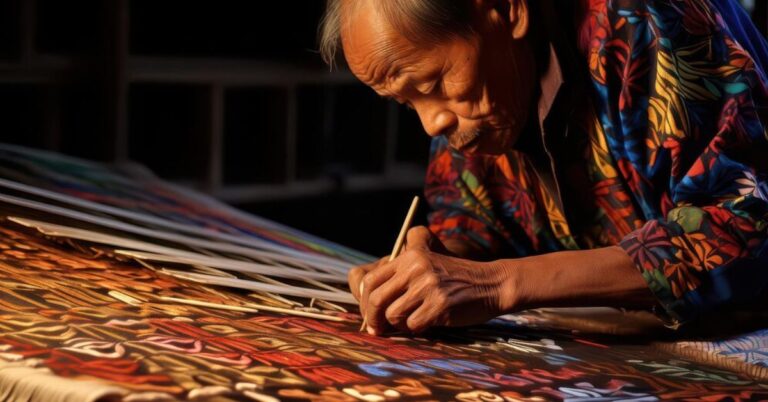Ruderne: A Deep Dive into Its Cultural Significance
Ruderne is a term that evokes curiosity and intrigue. It holds layers of meaning across various disciplines, cultures, and historical contexts. While it may seem like just another word, ruderne carries the weight of tradition, innovation, and artistry. Whether you’re an architecture enthusiast or a rowing aficionado, understanding ruderne can enrich your appreciation of its significance in our world today.
Join us as we embark on a journey to unravel the mystique surrounding ruderne. From its architectural roots to its role in contemporary art and literature, we’ll explore how this fascinating concept continues to shape cultural narratives and modern practices alike.
Ready to dive into the depths of ruderne? Let’s get started!
Understanding the Concept of Ruderne
Ruderne, at its core, is a multi-faceted concept that transcends simple definitions. It embodies elements of technique, artistry, and cultural heritage. This unique term often refers to components crucial in various fields.
In architecture, ruderne can signify structural features or design philosophies that enhance functionality while embodying aesthetic value. It captures the essence of balancing form with purpose.
Similarly, in literature and art, ruderne represents themes of resilience and adaptability. The rich narratives surrounding it offer profound insights into human experiences and societal evolution. Understanding ruderne invites us to appreciate these layers and their significance across diverse realms.
Ruderne in Various Contexts
Ruderne transcends simple definitions, appearing in diverse cultural landscapes. From ancient civilizations to modern settings, it has shaped various traditions and practices. Each context offers a unique lens through which we can understand its significance.
In the realm of sports, ruderne takes on a practical role in rowing competitions worldwide. Its design and function are crucial for performance, reflecting both engineering prowess and artistry. This blend highlights how ruderne evolves alongside athleticism.
Beyond sports, ruderne infuses art with inspiration as artists depict its forms in paintings or sculptures. These interpretations capture the essence of movement and grace while celebrating the historical narratives tied to this captivating concept.
Ruderne in Architecture, Art, and Literature
Ruderne has left an indelible mark on architecture, showcasing its versatility and beauty. Structures inspired by Ruder-ne often feature fluid lines that mimic the elegance of rowing crafts. This aesthetic not only captures attention but also serves functional purposes.
In art, Ruder-ne is a recurring theme symbolizing movement and teamwork. Artists frequently use this motif to convey unity and shared purpose, evoking emotions linked to both competition and collaboration.
Literature embraces Ruder-ne as a metaphor for life’s journey. Writers weave narratives about resilience and determination through stories centered around rowing experiences, reflecting challenges faced in pursuit of goals. Each portrayal contributes richly to the cultural tapestry surrounding Ruder-ne.
Ruderne in Rowing Equipment: Modern Applications
Ruderne has evolved significantly with modern rowing equipment. Today, it represents more than just the traditional oar; it’s a symbol of innovation and efficiency in water sports.
Manufacturers are now integrating advanced materials like carbon fiber and lightweight alloys into Ruder-ne designs. This enhances performance while reducing fatigue for athletes. Ergonomics play a crucial role too, ensuring that the grip and shape deliver optimal comfort during long races.
Moreover, technology is interwoven with Ruder-ne through smart sensors that track stroke efficiency and power output. These enhancements allow rowers to tailor their training regimes effectively, pushing boundaries in competitive rowing like never before.
The Evolution and Uniqueness of Ruderne
Ruderne has evolved significantly over time, adapting to the needs and preferences of different cultures. Initially crafted from wood, these rowing oars were essential for navigation and transportation on waterways. Their design was honed through centuries of craftsmanship.
As technology advanced, materials changed too. Modern Ruder-ne now incorporate lightweight composites like carbon fiber, enhancing performance without sacrificing strength. This shift not only improved speed but also made them more accessible to a broader audience.
Uniqueness stems from regional variations in design and usage. Different cultures have imbued their Ruder-ne with distinct styles that reflect local traditions and aesthetics, making each piece a testament to its heritage.
Exploring the Cultural Significance of Ruderne
Ruderne holds a unique place in various cultures, often symbolizing strength and endurance. In many communities, it represents the connection between humanity and water, highlighting traditions of exploration and adventure.
These oars are not just functional tools; they embody stories passed down through generations. Each stroke speaks to resilience and teamwork, celebrating shared experiences on rivers and lakes.
Artistic expressions have also embraced Ruder-ne. They appear in paintings, poetry, and folklore, showcasing their importance beyond mere utility. This cultural significance enriches our understanding of human relationships with nature while honoring the craftsmanship behind each beautifully designed oar.
Future Perspectives on Ruderne
As we look ahead, the importance of ruderne continues to grow. Emerging technologies are reshaping how we perceive and utilize these instruments across various fields. Innovative designs promise enhanced performance in rowing equipment while preserving traditional craftsmanship.
Cultural institutions are also integrating Ruder-ne into educational programs, fostering a deeper appreciation for their historical significance. This engagement encourages new generations to explore the rich narratives associated with Ruder-ne.
Sustainability is another vital consideration moving forward. The push for eco-friendly materials will likely redefine manufacturing processes, ensuring that future iterations not only honor heritage but also align with modern environmental values.
Sustainable Innovations and Considerations
Sustainable innovations surrounding Ruder-ne are gaining traction as society becomes more eco-conscious. The integration of renewable materials in the production of rowing equipment exemplifies this shift, reducing environmental impact while enhancing performance.
Innovators are exploring biodegradable alternatives to traditional plastics. These advancements not only minimize waste but also promote a healthier ecosystem for marine life. Every step toward sustainability counts in preserving our waterways.
Additionally, organizations focused on sustainable practices are influencing the design and use of Ruder-ne. Educational programs raise awareness about responsible usage, ensuring that future generations respect and cherish these vital resources. Such initiatives foster a culture of sustainability within the rowing community.
Conclusion
The journey through the world of ruderne unveils layers of meaning and significance. This term transcends simple definitions, weaving itself into various aspects of culture and creativity. It’s a testament to human innovation and expression.
From architecture that mirrors nature’s grace to art that evokes emotion, Ruder-ne captivates the imagination. It invites exploration in rowing equipment too, showcasing how tradition meets modernity in unexpected ways.
Looking ahead, Ruder-ne holds promise for sustainable innovations. These advancements will likely shape future practices while honoring its rich legacy. Engaging with Ruder-ne reveals not just its past but also hints at exciting possibilities on the horizon.
FAQS
What is Ruderne?
Ruder-ne refers to oars and represents a vital component in rowing. It embodies both the physical tool used for propulsion and a cultural symbol associated with teamwork, competition, and artistic expression.
How has Ruderne evolved over time?
Ruder-ne has seen significant changes from simple wooden oars to advanced materials like carbon fiber. This evolution reflects advancements in technology, enhancing performance while preserving tradition.
Can you find Ruderne in art and literature?
Absolutely! Ruder-ne appears as a motif representing journey or struggle. Artists and writers often use it to evoke themes of perseverance, community, or exploration.
Are there modern applications of Ruderne beyond sports?
Yes! Today’s designers incorporate ruder-ne into sustainable architecture and eco-friendly products. This adaptability showcases its relevance across various fields beyond traditional rowing.
Why is understanding the cultural significance of Ruderne important?
Understanding ruder-ne connects us to our heritage. Its historical context enriches our appreciation for both sporting endeavors and artistic expressions tied closely to human experience.







